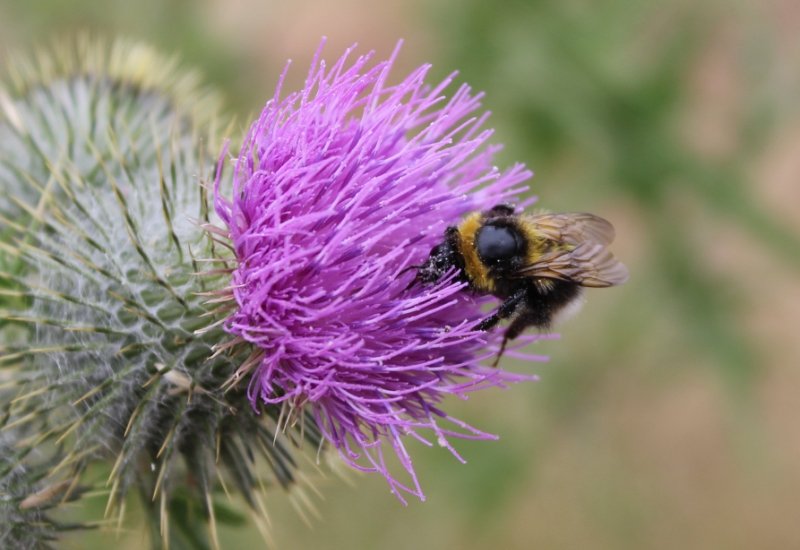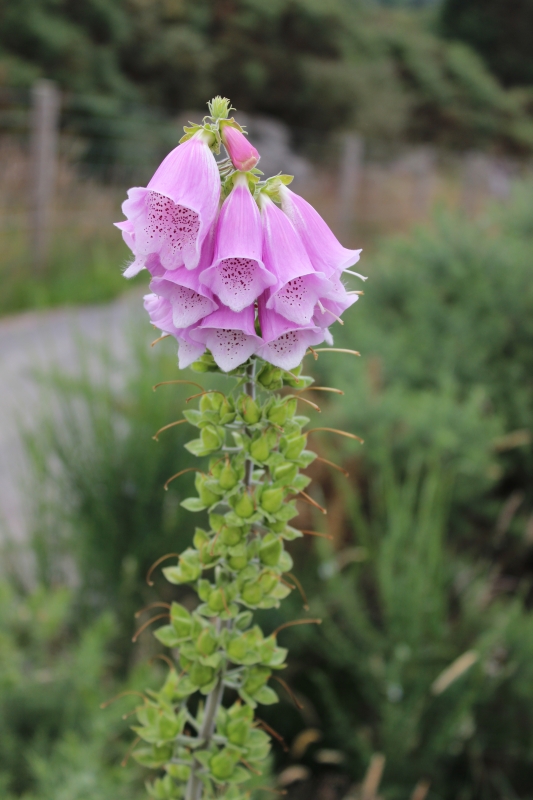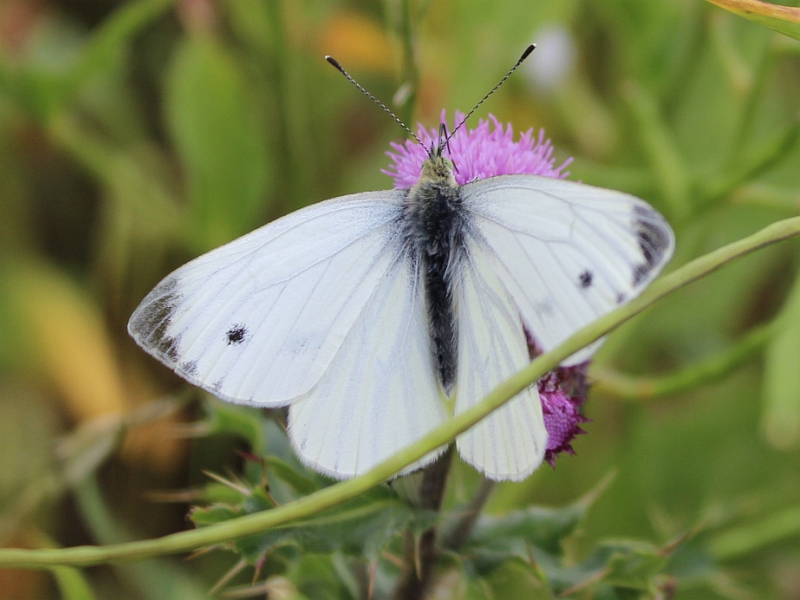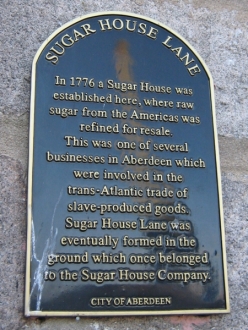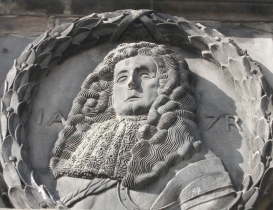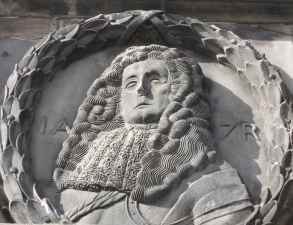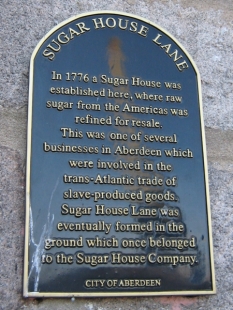Old Susannah turns her head awa frae Aberdeen this week as her lugs pick up gunfire in the States – again. By Suzanne Kelly
 Land of the Free, Home of the Brave, Bastion of Gun Worship; Americans witnessed another senseless bloodbath this past week. It was an American born Muslim extremist
Land of the Free, Home of the Brave, Bastion of Gun Worship; Americans witnessed another senseless bloodbath this past week. It was an American born Muslim extremist
in Orlando, Florida, with an automatic assault rifle in a nightclub. Which politicians will try to use these deaths to score points and whip up a bit more hatred (give you three guesses as to one of them)? Where will it be next time?
America needs some new slogans. ‘Land of the Free, home of the brave’ just doesn’t cut it anymore.
It seems to me that no one’s genuinely free. Minority groups, women and the poor have one set of laws to govern them, and freedoms are more than a little limited.
There is now an expression specifically for spurious, racially-motivated arrests, ‘Running (or driving) while black’.
The more money you’ve got, the better illusion of freedom you can afford, and the better protected you will be. Policing is biased in many places, and as we’ve seen from the Brock Turner rape case, Justice peeks from behind her blindfold, and can tell when there is some gold on her scales. Law and law enforcement have long since gone their separate way from Liberty. ‘Truth, Liberty and Justice for All’ no longer reflects the reality.
Aside from if you were a Native American, it all seemed such a good idea at the time.
The American experiment if taken literally would see people today free to choose where and how to live, collecting their own rainwater without fear of prison, living off the grid if they felt like it, and dare I say it – using whatever plants (including cannabis) however they chose to.
Funny, no one wants to take the freedom, equality and rights-concerned sections of the Constitution literally – but the NRA certainly wants to ensure that we take very literally ‘the right to bear arms’ (which of course was in the context of having a militia and when muskets ruled, not semi-automatics and Saturday Night Specials).
In the USA there are those who take the bible literally too, and are at great pains to prove the world is only 6,000 years old and the righteous will float up to heaven in the Rapture (NB this is a US invention, not that most of the bible belters will admit that). The only parts of the bible they don’t want to take literally (while they build ‘creation museums’ showing dinosaurs romping with humans) is the ‘love one another’/ ‘do unto others’ bit.
What a selective species we can be. Interpretation of Truth and Liberty have been warped by special interest and greed to the point they’ve broken.
When I moved to the UK from New York people would ask me why, and I’d half-jokingly reply ‘because I don’t want to get shot’. Some would look at me funny; I’d explain handgun proliferation and gun culture to the interested. But no one I met in the UK could really understand why some Americans are dead set on ‘protecting’ themselves with guns.
From all the evidence (accidental misfire killings and wounding;, parents shooting children arriving home late, etc), I don’t understand how a gun ‘protects’ the average Yank either.
One reason I’m going to try and write on this topic (once more) was a post Nick Tesco (a founder of The Members, but you know that) made on Facebook in the wake of Orlando:
“Dear American friends, do these mass murderers see children, church goers and gay people as tools of the tyranny that they’ve been obliged to take up arms against as demanded by your Second Amendment and like your NRA say? Or is that something you might need to take a look at when you’ve finished giving women a hard time about abortion?”
21st Century – Still tribal after all these years.
In his post Tesco seems to be asking for an American re-examination of values, guns, the meaning of freedom, and where the focus of securing freedom should be.
Tesco’s since qualified his post; he well knows that not all Yanks are the problem, and if you look at the UK through a similar lens, you might not see a pretty picture either.
For instance there is some unnecessary, ugly violence going on over the beautiful game in France at present. Nationalistic fans clash with nationalistic fans in the streets and bars of France on some primitive tribal quest to prove who’s the most warlike (and I suppose to their minds this makes them superior, manly, desirable). Things aren’t different in the US. Scenes at pro-Trump rallies make thinking-people cringe, and that’s before the violence starts.
What is the American Republican/Democrat push-pull if not mindless tribalism? Everyone wants their side to win, and most people stick with whichever party their parents belonged to. No one looks at what their elected officials’ backgrounds are or what entities fund them and chooses – just whether the elephant or the donkey wins.
You might be living in a trailer park on benefits in America, but if mom and dad were Republicans, you’re likely to vote for a billionaire because he’s in the Republican livery, however exploitative he is of you and your fellow poor Americans. The ingrained desire to be a ‘winner’ overrides logic, fact, and common sense for some.
There is a lot to love about America – most of the people, the environment, and the idea of liberty.
How, when and why did a country which declared the notion of freedom being its core value turn into a racist, sexist, elitist police state governed by the rich for the benefit of the rich and their richer multinational masters? Perhaps being formed on top of, rather than along side of, Native American rights and values, and on the back of slavery meant the American dream was always going to become a nightmare, but the bloodshed and inequality has to be countered before it’s too late.
Ultimately I don’t think it’s too late to turn it around (or I’d not bother writing about it) but this must happen now before more ground is lost to the crooked cop, the bent judge, the lobbyist-controlled congressman and the multinational.
An observation which may or may not be a non-sequiter came to mind. I’ve a good number of intelligent American friends and acquaintances; most far more intelligent than I am. A few have put their brains into music, art, politics; the majority have harnessed their talents to making money. I can’t help but think if they hadn’t been conditioned to think that money equalled success that such talent could have been applied to creative, political and humanitarian ends.
I also can’t help but think for some people, they’d be a lot happier if they hadn’t been worried about being a lot richer.
You might think you are freer in the US than in other places. Gun-loving Americans clutch their guns and decry they will use them to guard their freedoms. They think this is freedom; they think it is a free country. I beg to differ. Here are a few thoughts on how freedom is doing these days.
Free Elections?
Turning back to gun violence, there are many worthy groups fighting to get guns under some form of control. Why don’t people just vote for congressmen who will deliver gun control, and that will be the end of the problem?
In order to run for office, a candidate needs millions of dollars. Perhaps candidates start out with high hopes and best intentions. I respectfully suggest that with a few notable exceptions, by the time they raise this money, they will get their hands dirty. They will owe favours. Will they owe the National Rifle Association, arguably the most powerful lobbying group in America? More than likely.
“According to OpenSecrets, a site that tracks money in politics, the NRA spent $984,152 on campaign contributions during the 2014 election cycle. It also spent more than $3 million on lobbying in both 2013 and 2014. The NRA also spent $28,212,718 on outside political contributions during this period, which includes ads paid for directly by the NRA. That makes it the tenth biggest spender when it comes to such political spending.”
http://fortune.com/2015/12/03/san-bernadino-nra-political-spending-gun-violence/
Voting is a right people fought for, but not everyone uses. About 40% of the country will either not bother to turn out for a presidential election – or do not vote for more sinister reasons.
There are those who want to vote – but get turned away in increasing numbers for spurious reasons. Names go missing from electoral rolls. Last minute demands for photo ID sends some away. In a paradox, questions were raised about some of the votes delivered from Florida by Governor Jeb Bush to clan Bush member Dubya – were all of those who voted: alive, able to vote, received postal votes themselves that they alone completed – questions remain.
Can elections be rigged? Of course. Does that only happen in the third world? Of course not.
So, we are not free to select the best candidate to run for office; we are selecting from candidates pre-selected by vested interest groups who give their candidates enough money to run. We are not free to vote if we are turned away because of unconstitutional practices, and racism does still stop people from getting to the ballot box:
“Thousands of black electors in Florida were disenfranchised in last November’s [2000] election by an electoral system tainted by “injustice, ineptitude and inefficiency” a leaked report by the US civil rights commission says. It accuses Governor Jeb Bush, the president’s brother, and his secretary of state, Katherine Harris, of “gross dereliction” of duty, saying they “chose to ignore mounting evidence” of the problems.
“The eight-strong commission, whose report will be published on Friday, found that black voters were “10 times more likely than white voters to have their ballots rejected”, and pointed to the use of a flawed list of felons and ex-felons to purge the voting rolls. https://www.theguardian.com/world/2001/jun/06/uselections2000.usa
Freedom fail.
Tesco also once posed on Facebook that everyone should vote; this is true up to a point. Not that I take all my political leads from musicians, but Jerry Garcia is attributed with having said (I paraphrase again) ‘If you vote and choose between two evils, you are still choosing evil.’
So – while I must vote for Clinton – as a vote against Trump – it is not because of any woman solidarity, and it’s certainly not because I approve of her Monsanto links.
She is clearly the better choice over Trump. A nation of 260 million people – and it comes down to this. I might well write in George Takei who has always spoken out against violence and intolerance, or for heroic filibustering senator Chris Murphy whose stamina has forced a congressional vote to ‘close the terror gap’.
In the end, I will vote for Clinton, to avoid the Trump presidency, and the catastrophe that would spell. (besides which, I’d like to be able to visit the US in the next 4 years without winding up in a boiler suit on my way to GitMo). As far as I know, unlike Trump, Clinton’s not racked up 3,500 lawsuits, hasn’t opened a fleecing operation posing as a ‘university’ and doesn’t want everyone armed. She’s no plans to ‘take out’ people related to terrorists, or to ban Muslims / American Muslims from travel.
Free to have guns.
Anything you need to know about the illogic and insanity of having automatic weaponry freely available can be found in Michael Moore’s Bowling for Columbine documentary. The sad thing is that this film was made in 2002. Oh, and the wealth and power of the NRA tells you why the country is like this.
Life, Liberty & the Pursuit of Happiness.
At the same time we Americans are telling ourselves how ‘free’ we are, and how we want to bring freedom to other countries (frequently those with resources NB), liberty is getting a beating at home and abroad. The same ilk of senator who will keep automatic guns on sale is legislating to give American water not to Americans, but to sell or give it to companies like Nestle, which is bottling it up and signing lucrative deals to take water in states like Oregon.
Want to collect rain water on your own property? In many states that will land you in prison – like Oregon, which is giving your water to Nestle.
Nick Tesco is right in his Facebook post when he alluded to abortion, but it is actually worse and worsening for any woman who wants control over her body and life. Have a spontaneous abortion – don’t do it in certain states, or you’ll go to jail for failing to carry full term.
There are places where you will be mauled by a police dog, beaten to a pulp or beaten to death – or shot for offences like having a tail light out on your car, driving too slowly, running, or just being non-white in a white area. The police are brutal in some states. There is no other way of putting it.
And Justice for All?
Some police officers are people who want to make the world better; however, organisations like Police the Police are proving time and again that the police force today includes Ku Klux Klan members, paedophiles and sadists. They largely seem immune from prosecution – while the guy collecting rain water or trying to live ‘off the grid’ will spend years in prison. In some states, growing marijuana can lead to decades in prison.
However, if you are white, privileged – and a good swimmer – raping an unconscious woman will get you a few months in a cell at most.
I’d add a description of how Native Americans have been treated past and present – but I cannot do it justice at all. Here is a good place to look at one issue though – the veritable kidnapping of Native children who are chemically coshed and placed with white, extreme ‘Christian’ families for no good reason other than money is made from it, and families and culture is destroyed in the process. This is the tip of the iceberg for Native issues.
It’s lunacy, and as far as the eye can see, the root causes are greed and self-interest.
Does this make me a conspiracy theorist?
Does it serve the interests of those in power when these incidents happen? It doesn’t always hurt. You’ve got Trump insisting if everyone had a gun, Orlando wouldn’t have happened (so no hostage or crossfire casualties in his world I suppose). When the serial killer in question is non-white and non-Christian – then the authorities insist we have an Islamic jihad problem that can only be served by the rest of us giving up more of our freedoms and… by panicking the suggestible into buying guns to protect themselves.
We know how well that works out.
CODA
Just as I finish this piece, Jo Cox MP has been shot and stabbed; she supports the Remain campaign, and works to help Syrian refugees. Allegedly the assailant yelled ‘Britain First.’ [17 June: Jo Cox has been murdered. Britain First’s Facebook page has a BF ‘news’ item that the murderer didn’t shout ‘Britain First’ – they shouted ‘Put Britain First’. A trivial distinction which ignores the fact she is dead, and those who have worked tirelessly to ratchet hatred up several notches are at least in part culpable.]
If the reports prove true, and they are a Britain First supporter, they have shown BF in its true light. Despite its many Facebook posts using click bait such as veterans, dog fighting, elderly issues – they are only nationalistic, white supremacist violent thugs. If this is how their followers try to advance their cause, let’s ensure we stop sharing their posts at the very least, and let’s make sure they don’t get a foothold.
The US is rapidly becoming ruled by gunpower – let’s ensure that never happens here.
- Comments enabled – see comments box below. Note, all comments will be moderated.
[Aberdeen Voice accepts and welcomes contributions from all sides/angles pertaining to any issue. Views and opinions expressed in any article are entirely those of the writer/contributor, and inclusion in our publication does not constitute support or endorsement of these by Aberdeen Voice as an organisation or any of its team members.]
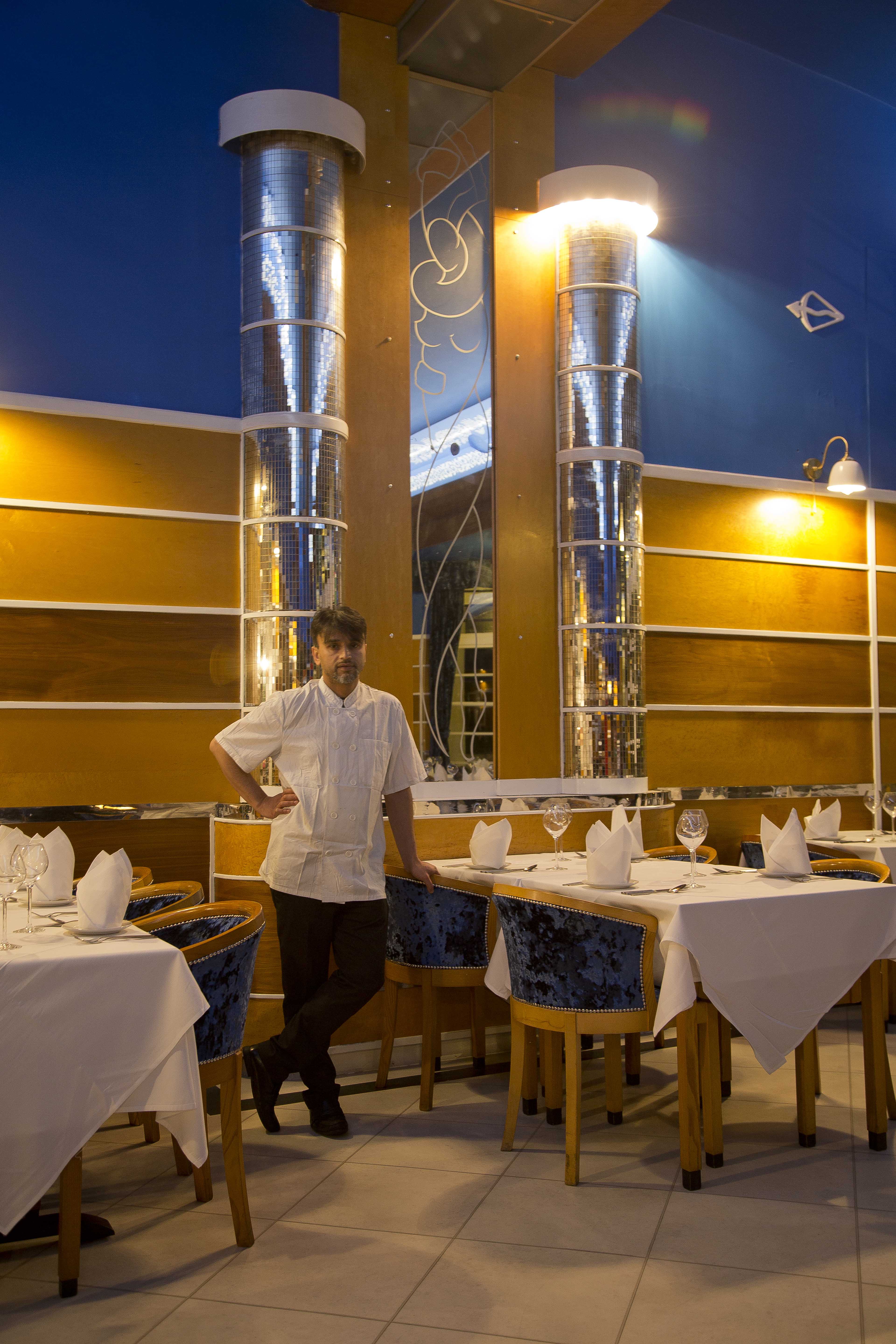 Duncan Harley shares his experience of the recently opened ‘Carron To Mumbai’ Restaurant in Stonehaven.
Duncan Harley shares his experience of the recently opened ‘Carron To Mumbai’ Restaurant in Stonehaven.  Purchased by a caring local business-man, the premises underwent an extensive but sensitive restoration which, at a cost of somewhere near a million pounds, incorporated many the original art-deco fittings and returned the building to near original condition.
Purchased by a caring local business-man, the premises underwent an extensive but sensitive restoration which, at a cost of somewhere near a million pounds, incorporated many the original art-deco fittings and returned the building to near original condition.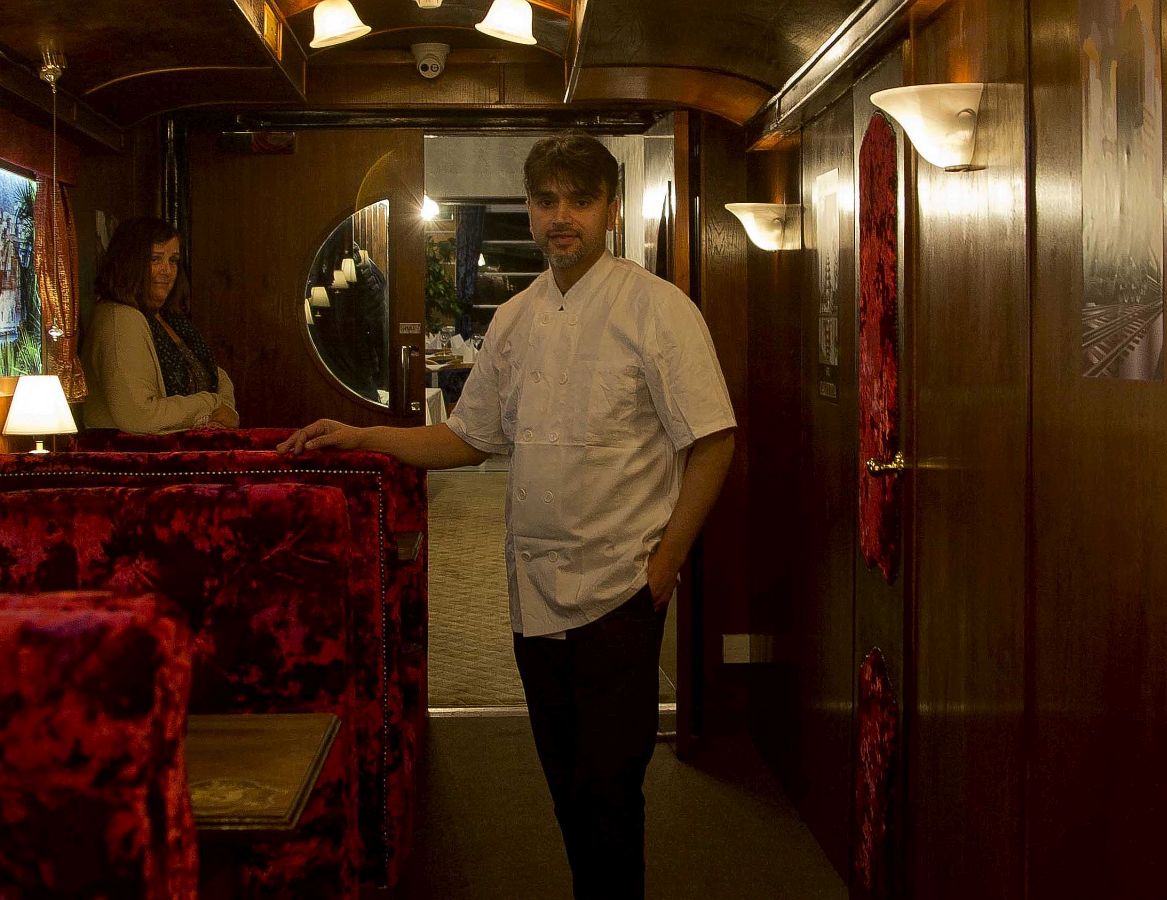 So, part Scottish and part Indian in origin, the building has feet in two camps and that, perhaps is the key to this new and exciting dining experience.
So, part Scottish and part Indian in origin, the building has feet in two camps and that, perhaps is the key to this new and exciting dining experience.

